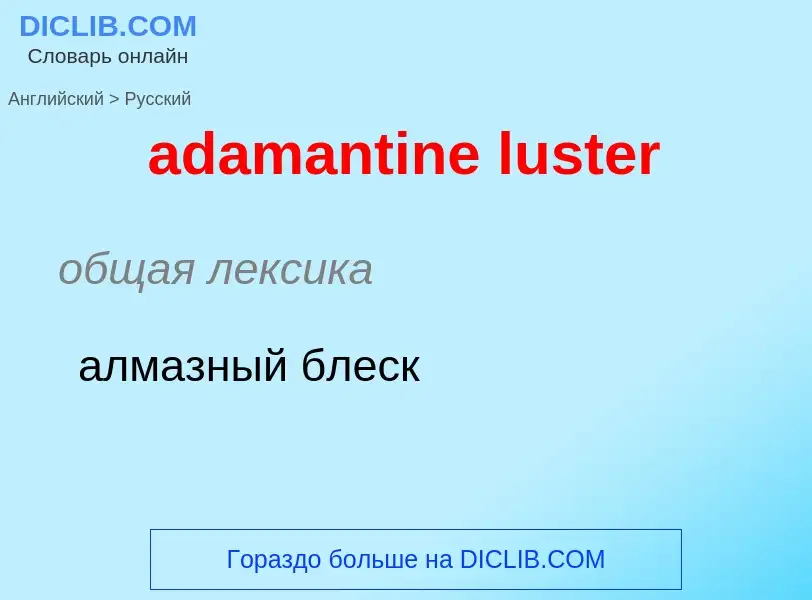Vertaling en analyse van woorden door kunstmatige intelligentie
Op deze pagina kunt u een gedetailleerde analyse krijgen van een woord of zin, geproduceerd met behulp van de beste kunstmatige intelligentietechnologie tot nu toe:
- hoe het woord wordt gebruikt
- gebruiksfrequentie
- het wordt vaker gebruikt in mondelinge of schriftelijke toespraken
- opties voor woordvertaling
- Gebruiksvoorbeelden (meerdere zinnen met vertaling)
- etymologie
adamantine luster - vertaling naar russisch
общая лексика
алмазный блеск
общая лексика
стеклянный блеск
['lʌstrəs]
общая лексика
глянцевитый
лоснящийся
блестящий
прилагательное
общая лексика
блестящий
глянцевитый
блестящий (о таланте и т. п.)
лучезарный (о характере и т. п.)
синоним
Wikipedia
Lustre (British English) (or luster) (American English; see spelling differences) is the way light interacts with the surface of a crystal, rock, or mineral. The word traces its origins back to the Latin lux, meaning "light", and generally implies radiance, gloss, or brilliance.
A range of terms are used to describe lustre, such as earthy, metallic, greasy, and silky. Similarly, the term vitreous (derived from the Latin for glass, vitrum) refers to a glassy lustre. A list of these terms is given below.
Lustre varies over a wide continuum, and so there are no rigid boundaries between the different types of lustre. (For this reason, different sources can often describe the same mineral differently. This ambiguity is further complicated by lustre's ability to vary widely within a particular mineral species). The terms are frequently combined to describe intermediate types of lustre (for example, a "vitreous greasy" lustre).
Some minerals exhibit unusual optical phenomena, such as asterism (the display of a star-shaped luminous area) or chatoyancy (the display of luminous bands, which appear to move as the specimen is rotated). A list of such phenomena is given below.

![[[Pyrite]] [[Pyrite]]](https://commons.wikimedia.org/wiki/Special:FilePath/Pyrite 3.jpg?width=200)
